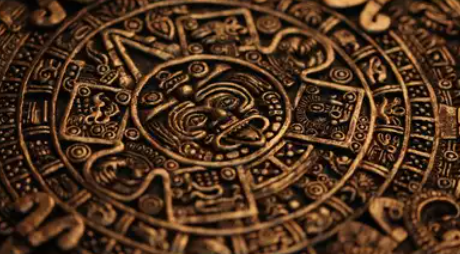World’s Oldest Calendar Discovered at Göbekli Tepe (GS Paper 1, Arts & Culture)

Introduction
- On August 14, 2024, archaeologists at Göbekli Tepe in southern Turkey announced a groundbreaking discovery: the world’s oldest known Sun-and-Moon calendar.
- This remarkable find, reported on July 24, provides new insights into early timekeeping methods and the development of human societies.
Key Discovery
The centerpiece of this discovery is a large stone pillar, estimated to be nearly 13,000 years old. The pillar is adorned with 365 V-shaped symbols, each potentially representing a single day. This sophisticated design reflects an advanced understanding of both solar and lunar cycles:
- 365 V-Shaped Symbols: These symbols suggest a calendar system that accounted for an entire solar year.
- 12 Lunar Months Plus 11 Days: The calendar includes 12 lunar months plus an additional 11 days, indicating a highly developed grasp of time and the need to reconcile lunar and solar cycles.
In addition to the calendar, the pillar features carvings of a bird-like figure, which may represent the summer solstice constellation. This adds a layer of astronomical significance to the find.
Historical Implications
The calendar and carvings offer valuable insights into the ancient world around 10,850 B.C. During this period, a major comet strike is believed to have occurred, potentially triggering significant climate changes and cultural shifts:
- Comet Strike: This event might have caused an ice age, leading to shifts in societal structures, religious practices, and agricultural methods.
- Impact on Society: The environmental changes resulting from the comet strike may have influenced the development of early writing systems and other aspects of human knowledge.
Martin Sweatman, a study author, posits that the comet strike and its aftermath could have spurred the development of early writing systems and other advancements. The findings at Göbekli Tepe thus provide crucial insights into early astronomical practices and societal developments.
Facts About Göbekli Tepe
- Age and Significance: Göbekli Tepe, constructed around 9600 BCE, is the oldest known temple complex. It predates Stonehenge by over 6,000 years.
- Structure: The site features massive stone pillars arranged in circles, suggesting ceremonial or religious functions.
- Builders: The site was likely built by people who had not yet adopted agriculture, challenging earlier assumptions that farming preceded complex architectural projects.
- Symbolism: The carvings on the pillars, including animal depictions, indicate early symbolic thinking and cultural practices.
- Excavations: The site has been under excavation since the 1990s, revealing its historical and cultural significance.
Conclusion
- The discovery of the world’s oldest calendar at Göbekli Tepe marks a significant milestone in understanding early human civilizations.
- This find not only highlights the advanced astronomical knowledge of ancient societies but also underscores the impact of environmental events on cultural development.
- As research continues, Göbekli Tepe promises to yield further insights into the complex interplay between early human societies and their understanding of the cosmos.


